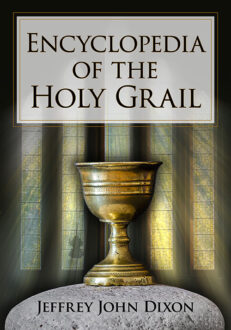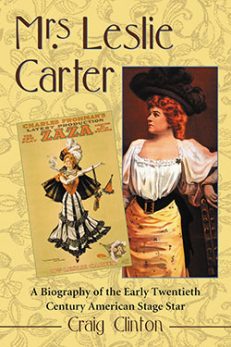Mrs. Leslie Carter
A Biography of the Early Twentieth Century American Stage Star
$45.00
In stock
About the Book
Born Caroline Louise Dudley, Mrs. Leslie Carter was destined to become one of America’s principal turn-of-the century actresses. In 1889, a high profile divorce case labeled her an adulteress and sent her to the brink of poverty. With characteristic resilience, however, Mrs. Carter used infamy to her advantage. Retaining her married name as an act of revenge against her ex-husband, she approached David Belasco, one of the foremost playwright/directors of the day, and persuaded him to teach her the art of acting. So began one of theatre’s most prolific partnerships. Not only did Belasco become Mrs. Carter’s acting coach, he composed plays specifically as vehicles to showcase her particular talents. Although their relationship ruptured in 1906, Mrs. Carter continued to enjoy international renown. Weathering the changing times and methods of the early twentieth century, she persevered through stage, silent movies and vaudeville shows.
This biography focuses particularly on Mrs. Carter’s successful career and on her professional partnership with David Belasco. Spanning a period of radical transformation in American theatre, her career reflected—and endured—the artistic changes which occurred during the decades on either side of the century mark. Period photographs and theatrical art are included.
About the Author(s)
Bibliographic Details
Craig Clinton
Format: softcover (7 x 10)
Pages: 228
Bibliographic Info: 32 photos, notes, bibliography, index
Copyright Date: 2006
pISBN: 978-0-7864-2747-5
Imprint: McFarland
Table of Contents
Acknowledgments vii
Preface 1
Introduction 3
1. Carrie Louise Dudley of Dayton, Ohio 9
2. A Revolting Case Disposed Of 18
3. Enter Mr. Belasco and Mr. Fairbank 29
4. The Ugly Duckling, Miss Helyett, and “Lessons” 40
5. The Heart of Maryland 54
6. Zaza 65
7. Du Barry 79
8. Adrea, the Tragedy 92
9. Miss Munro and Mr. Payne 103
10. Two Post-Belasco Debacles: Cleo and Kassa 112
11. Vasta Herne and Two Women 127
12. Revivals, “Living Pictures,” and Vaudeville 141
13. The Comeback 155
14. The Shanghai Gesture 170
15. Everyman 186
Chapter Notes 193
Bibliography 207
Index 215





